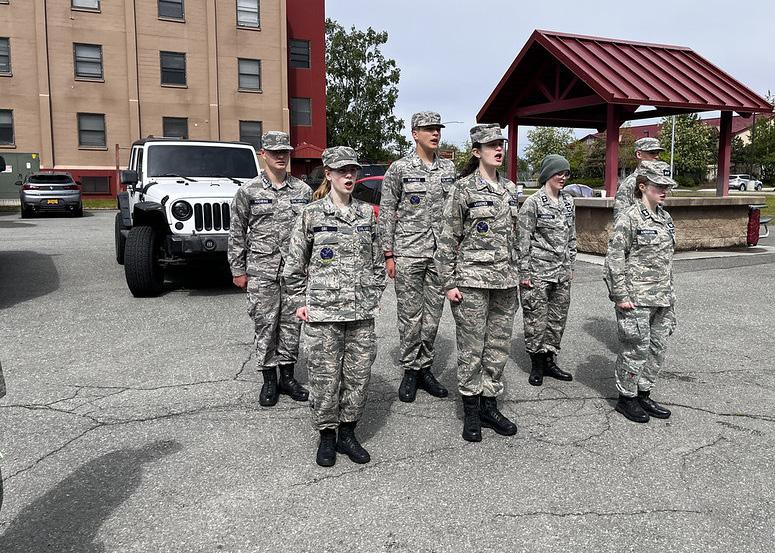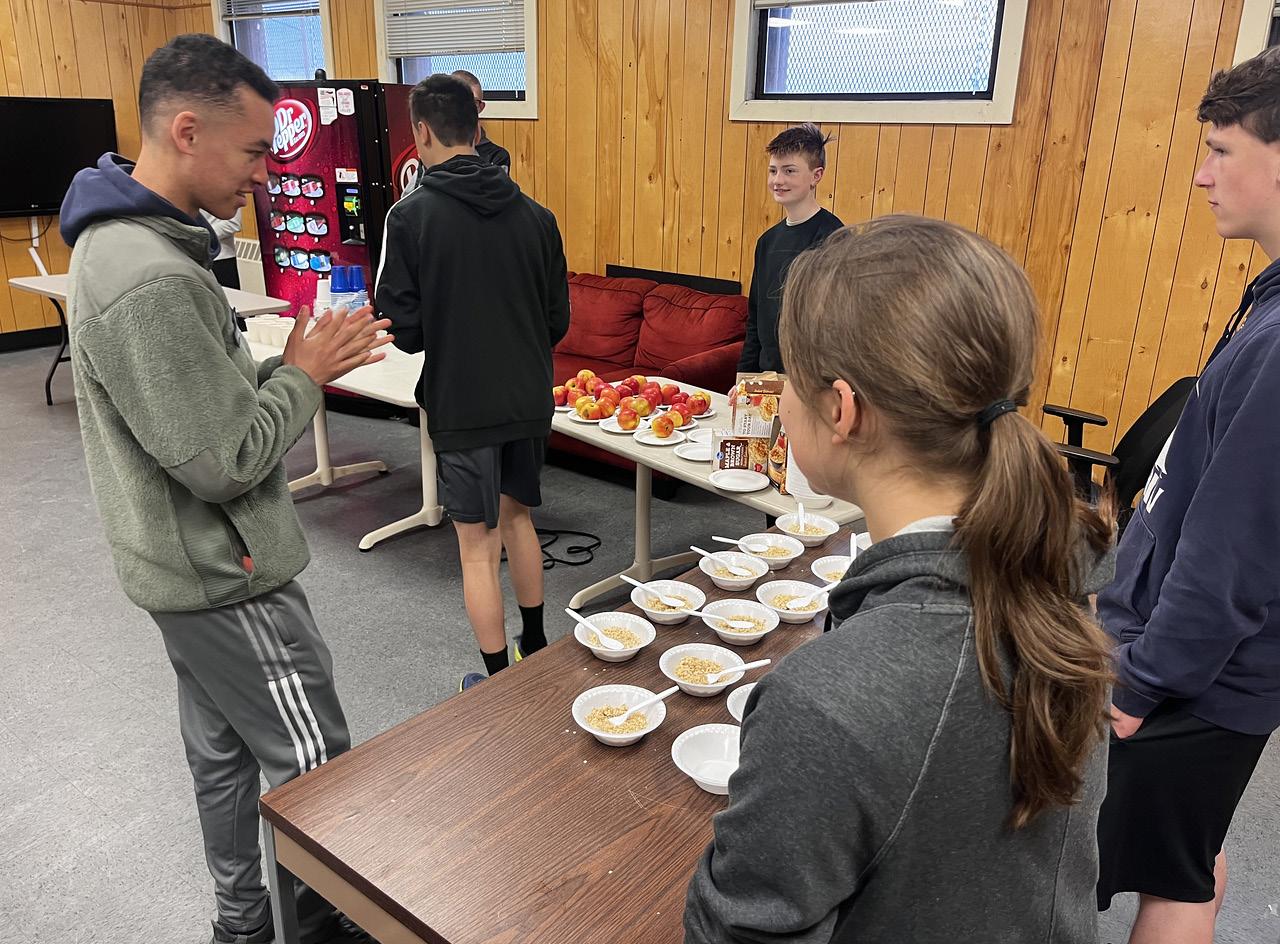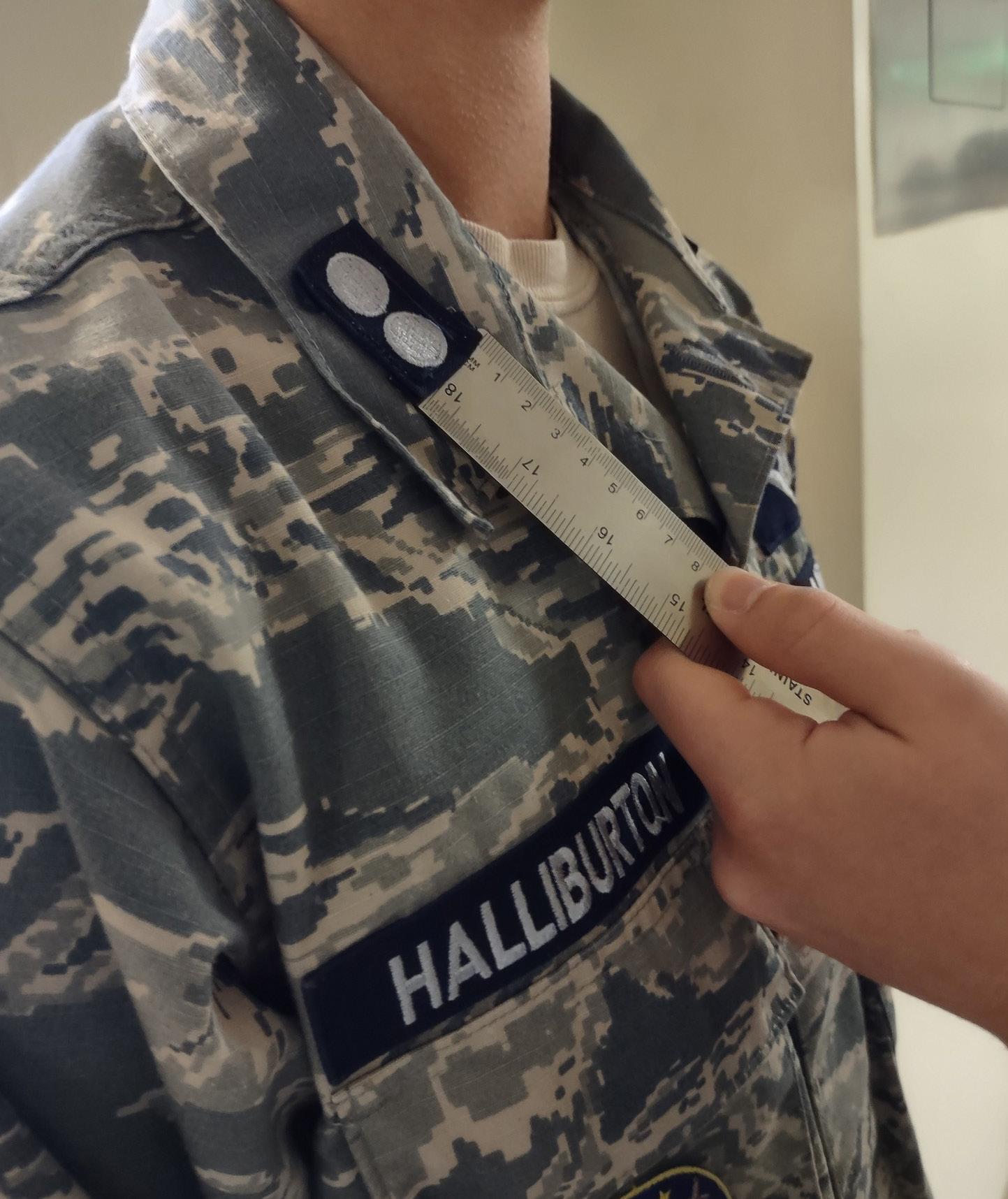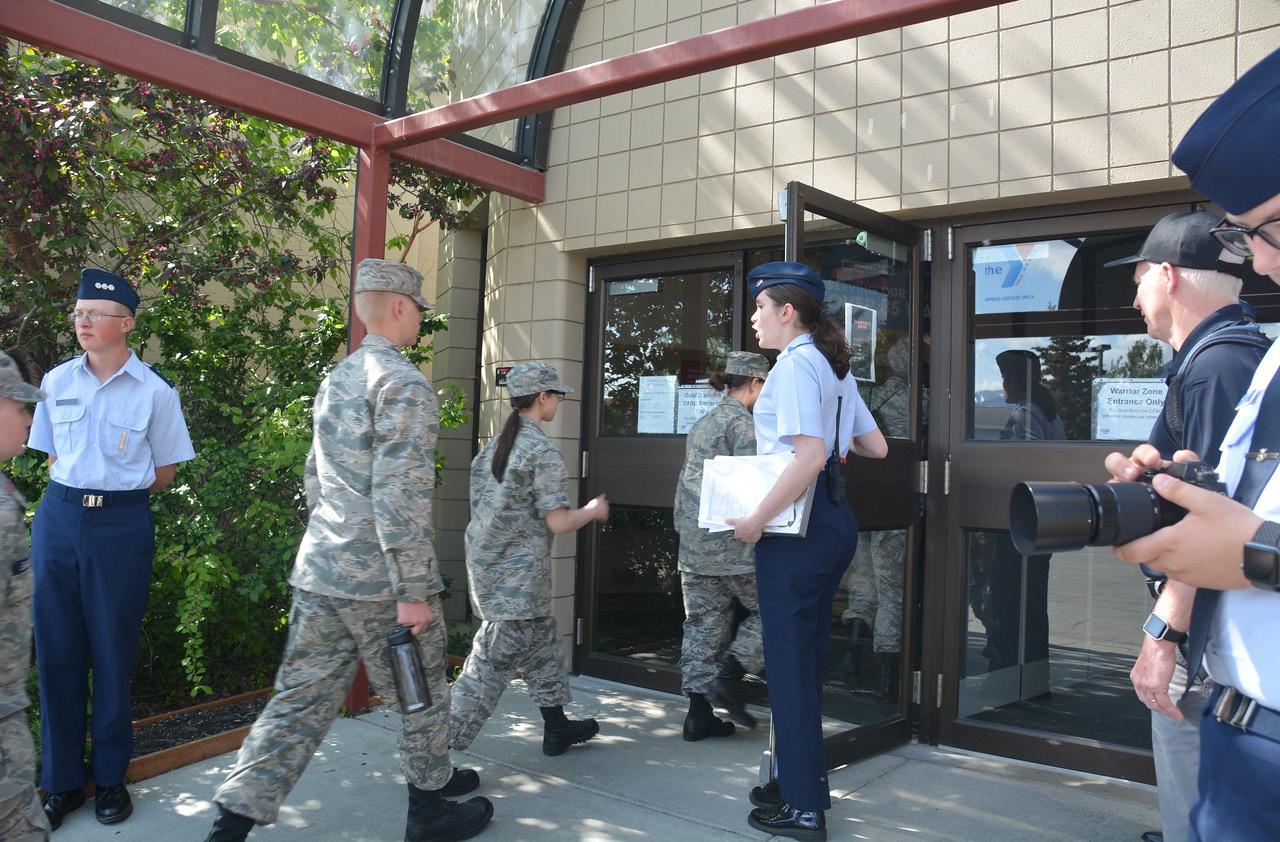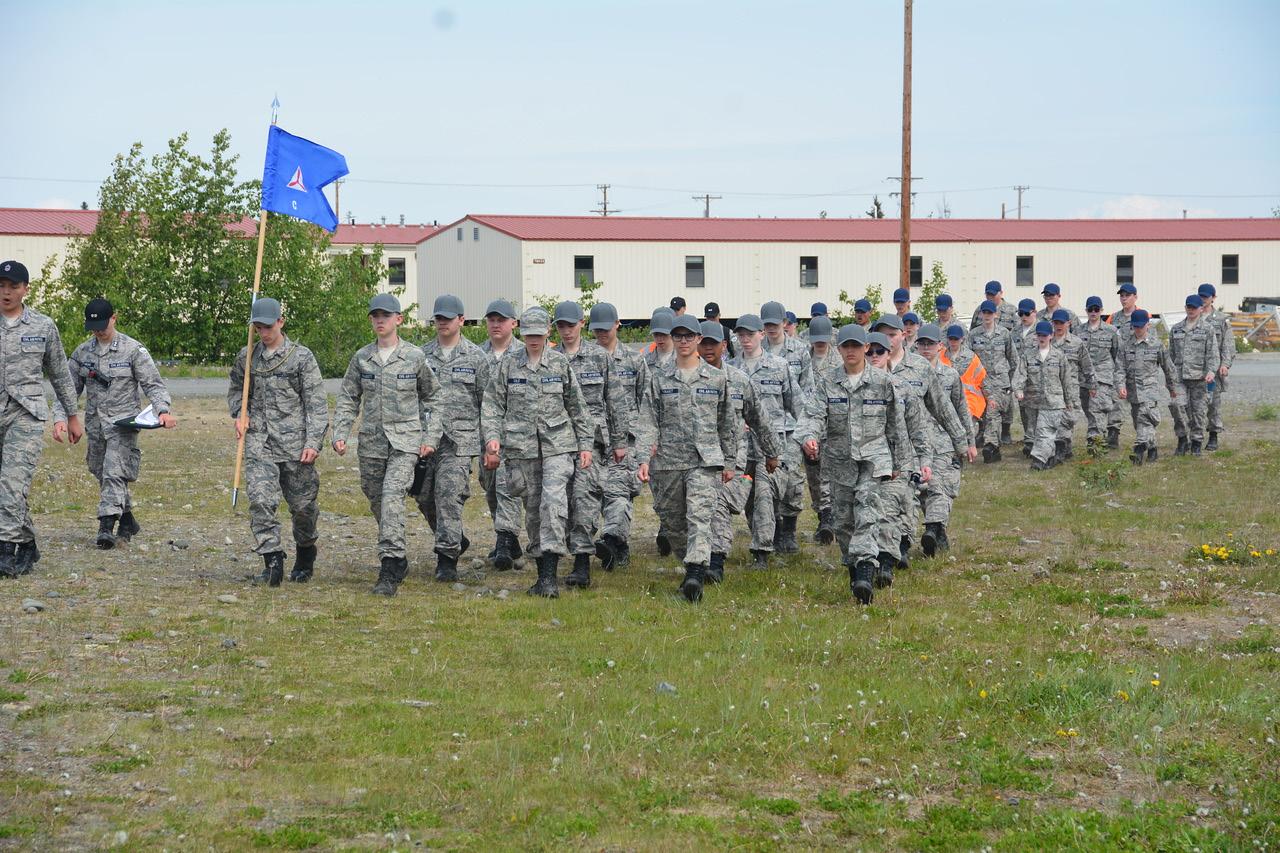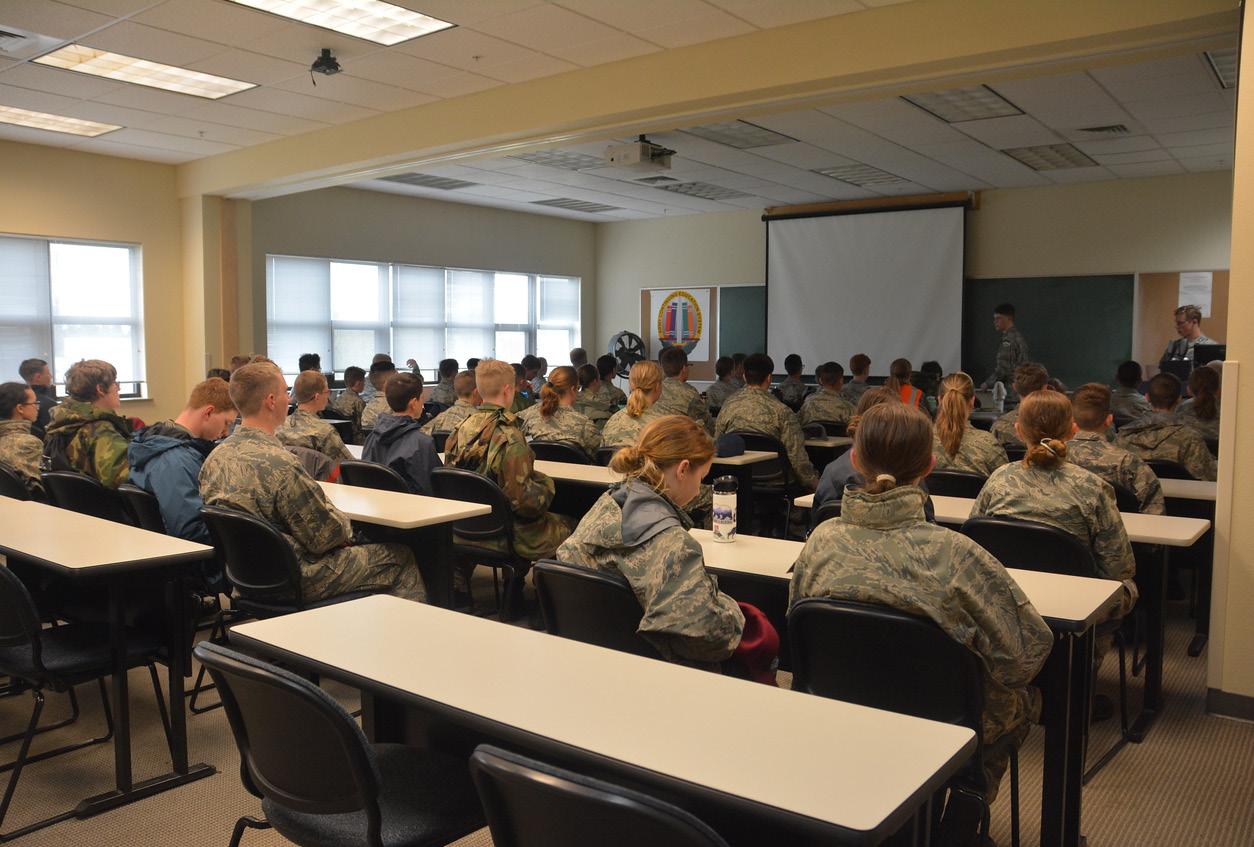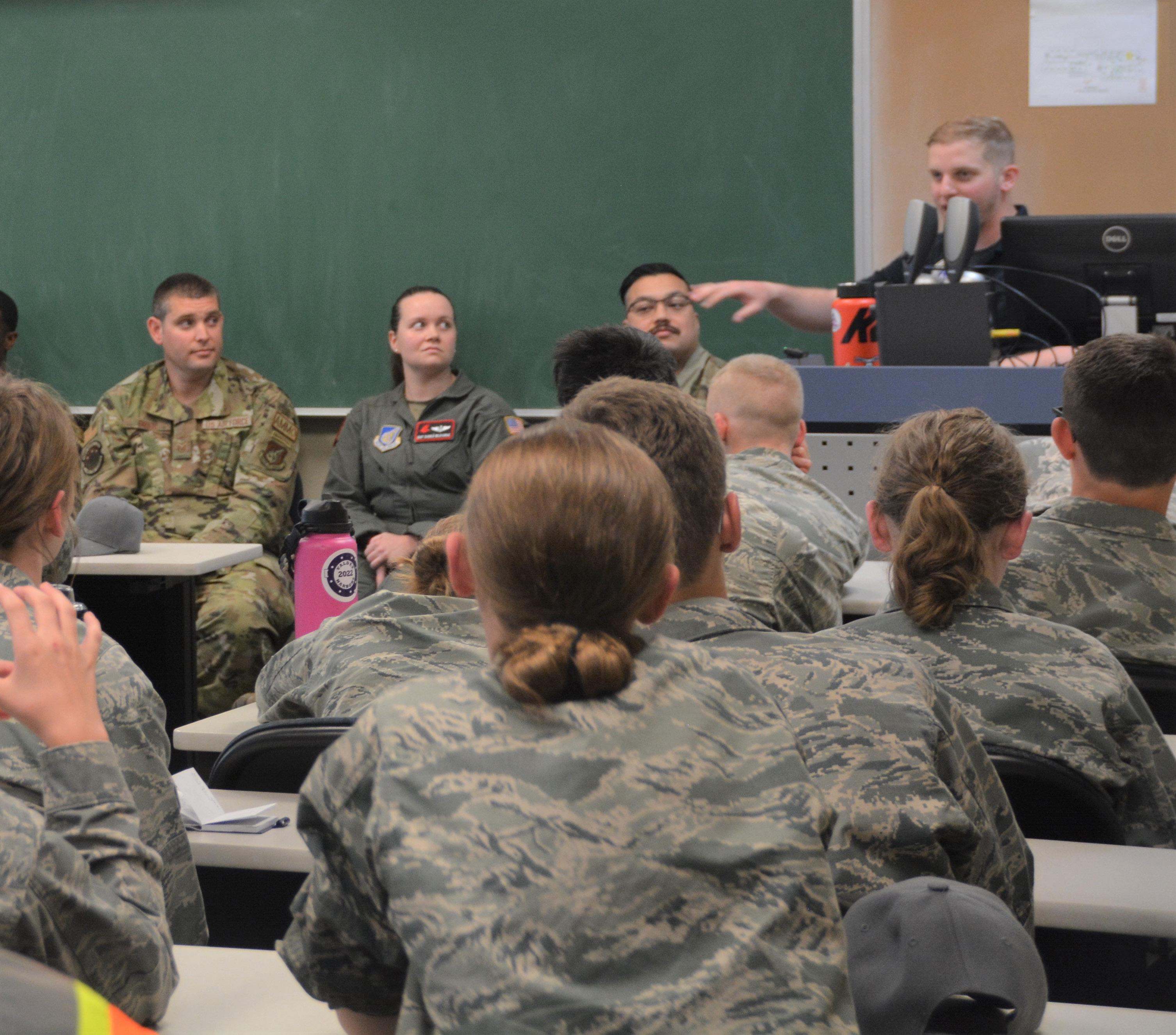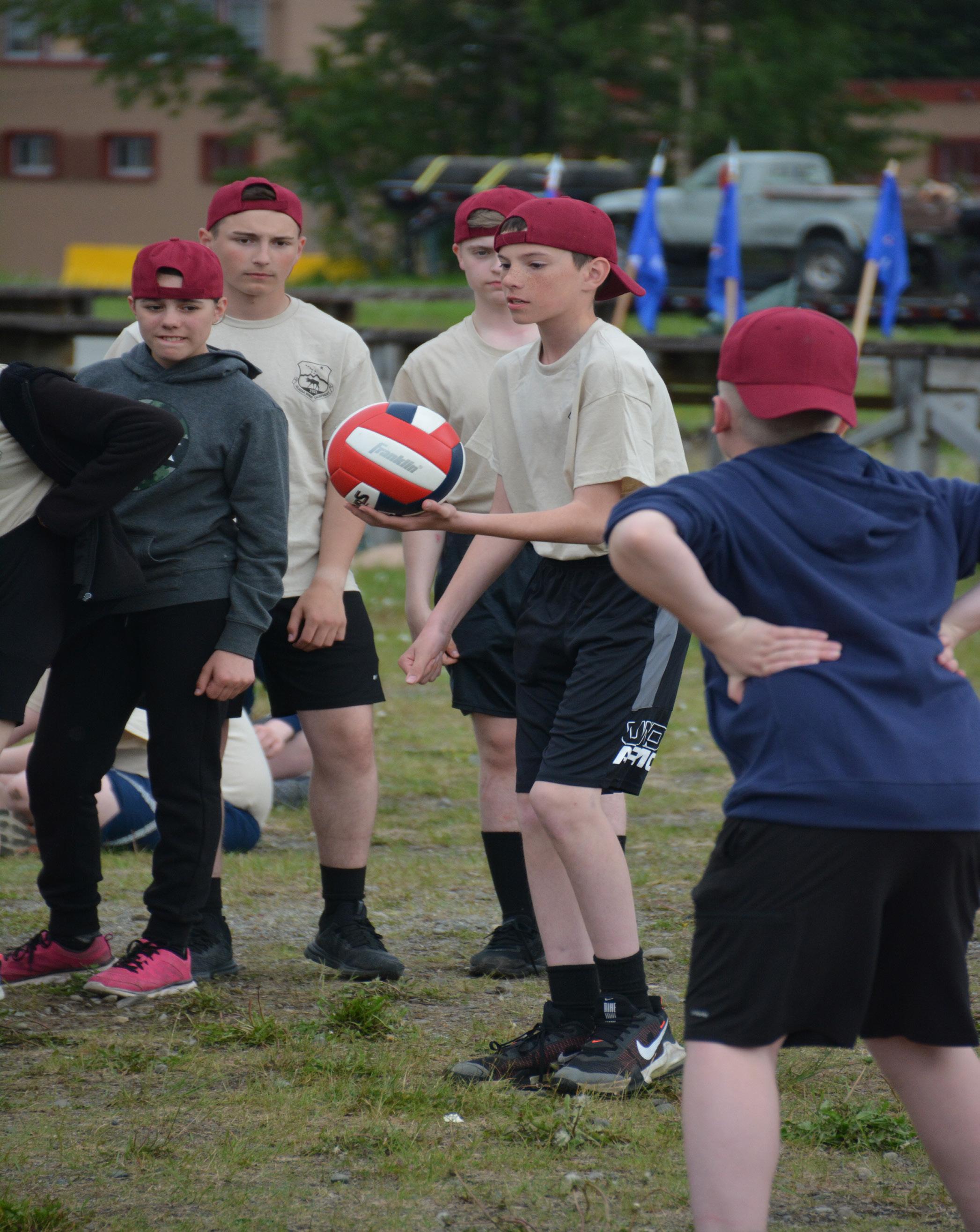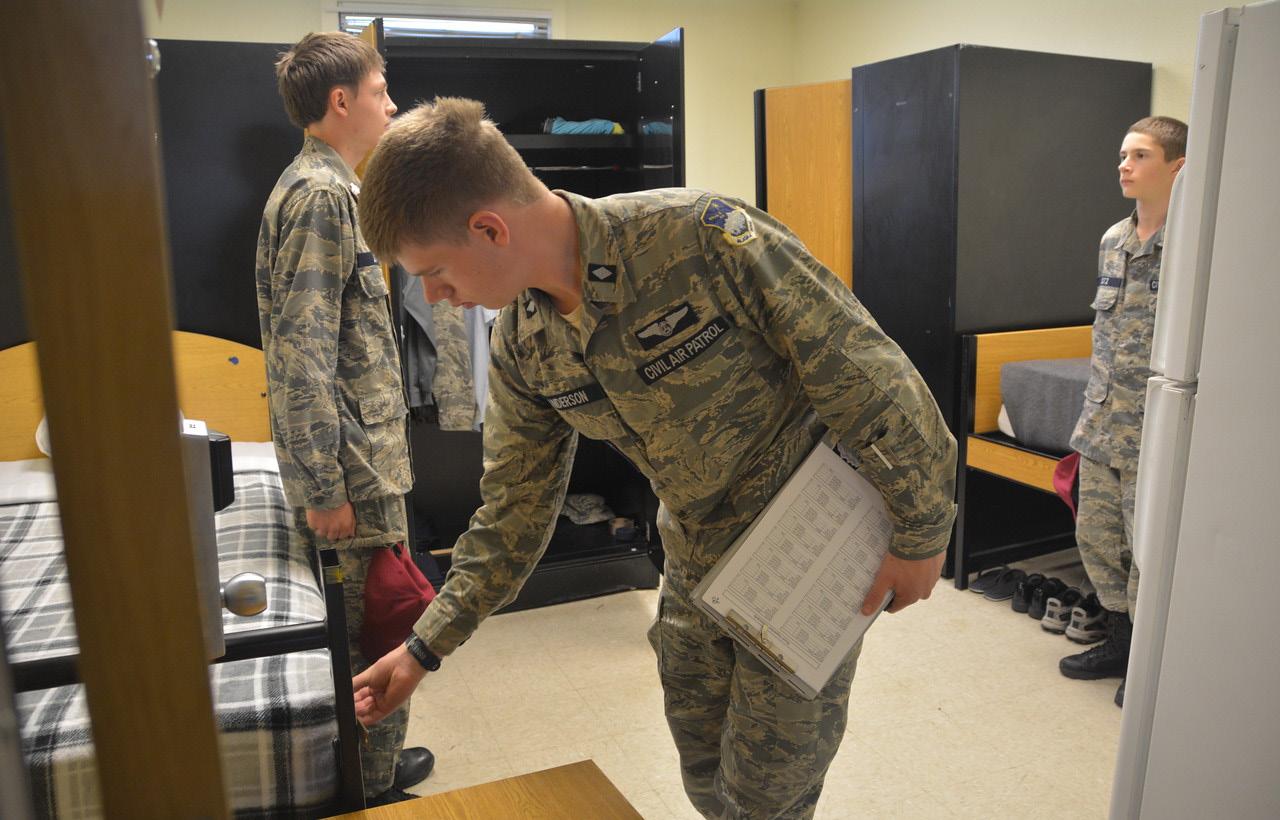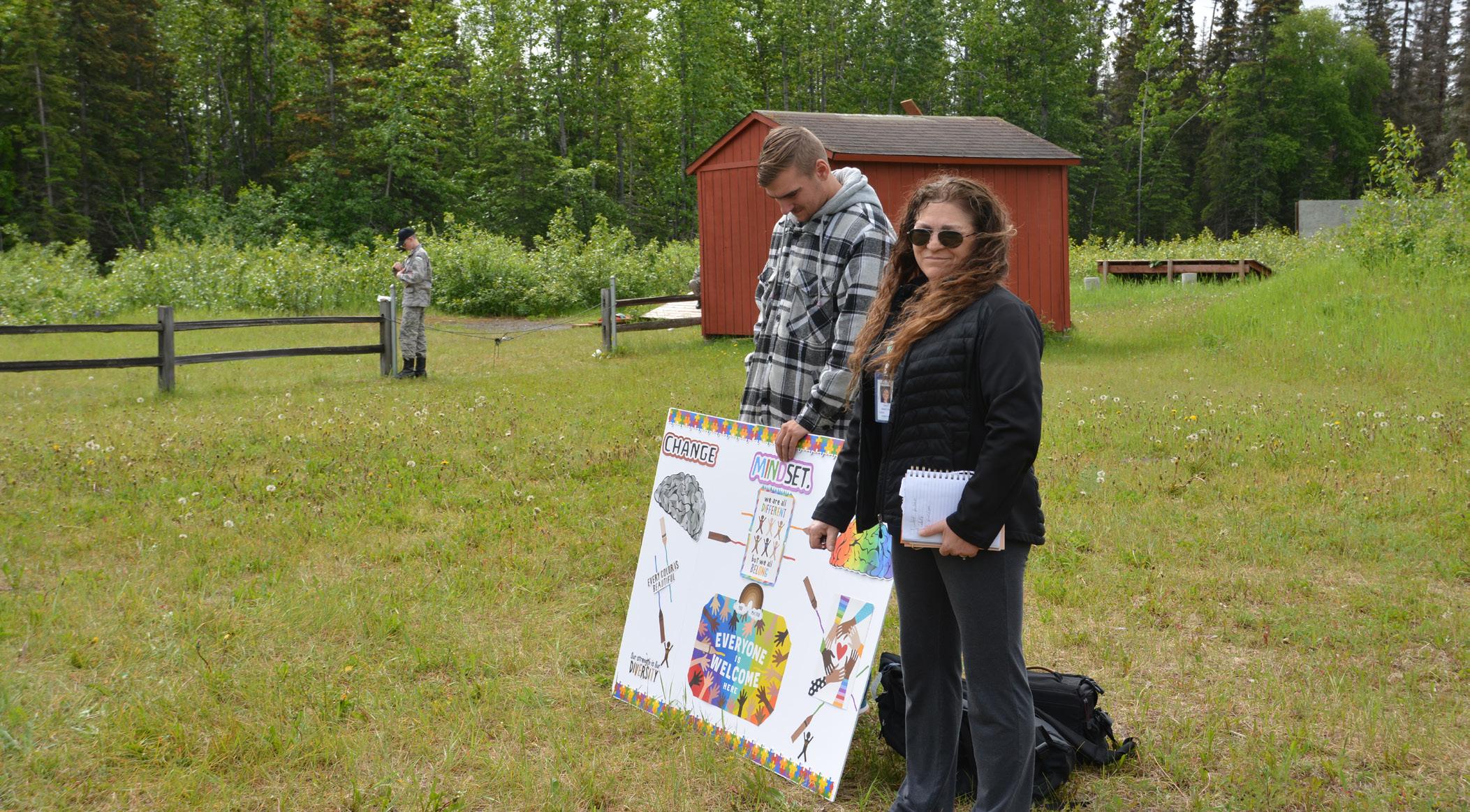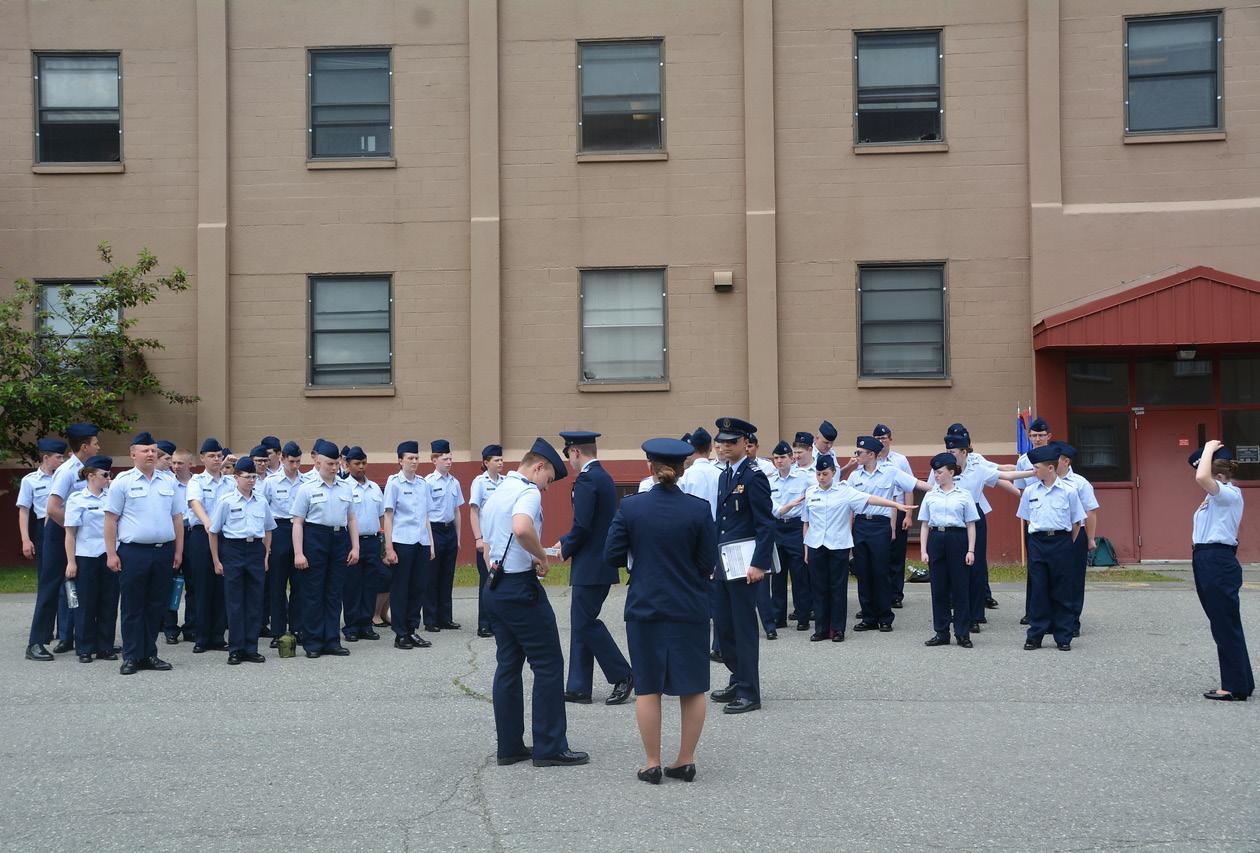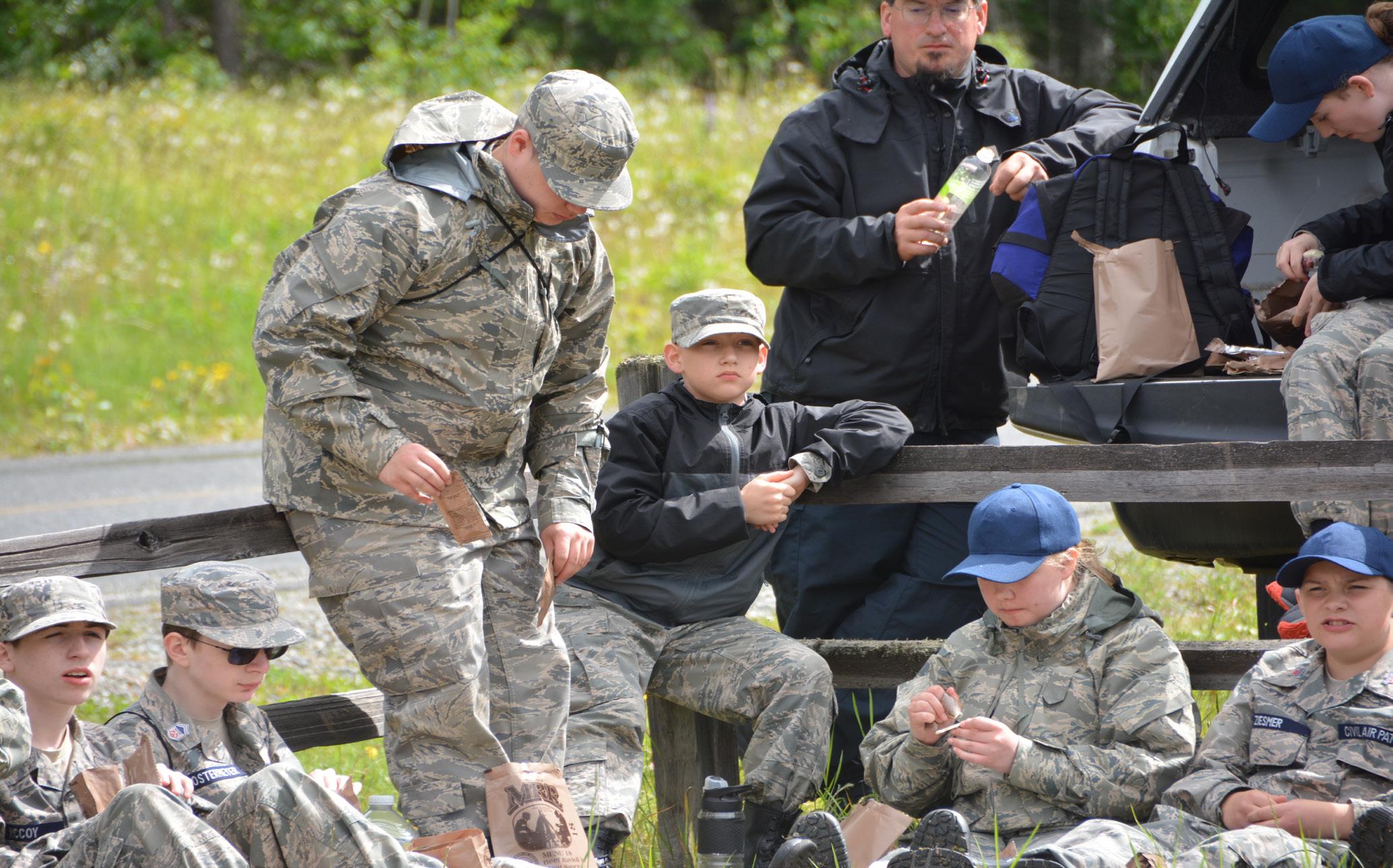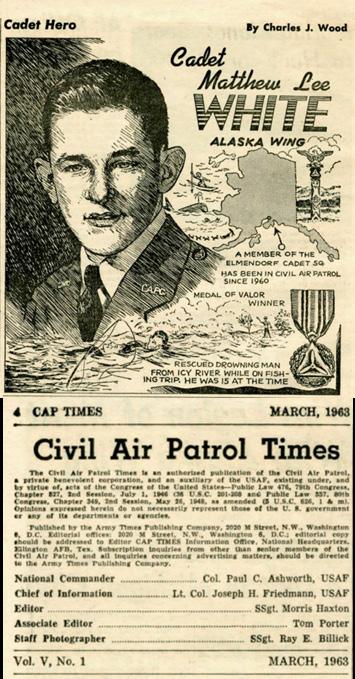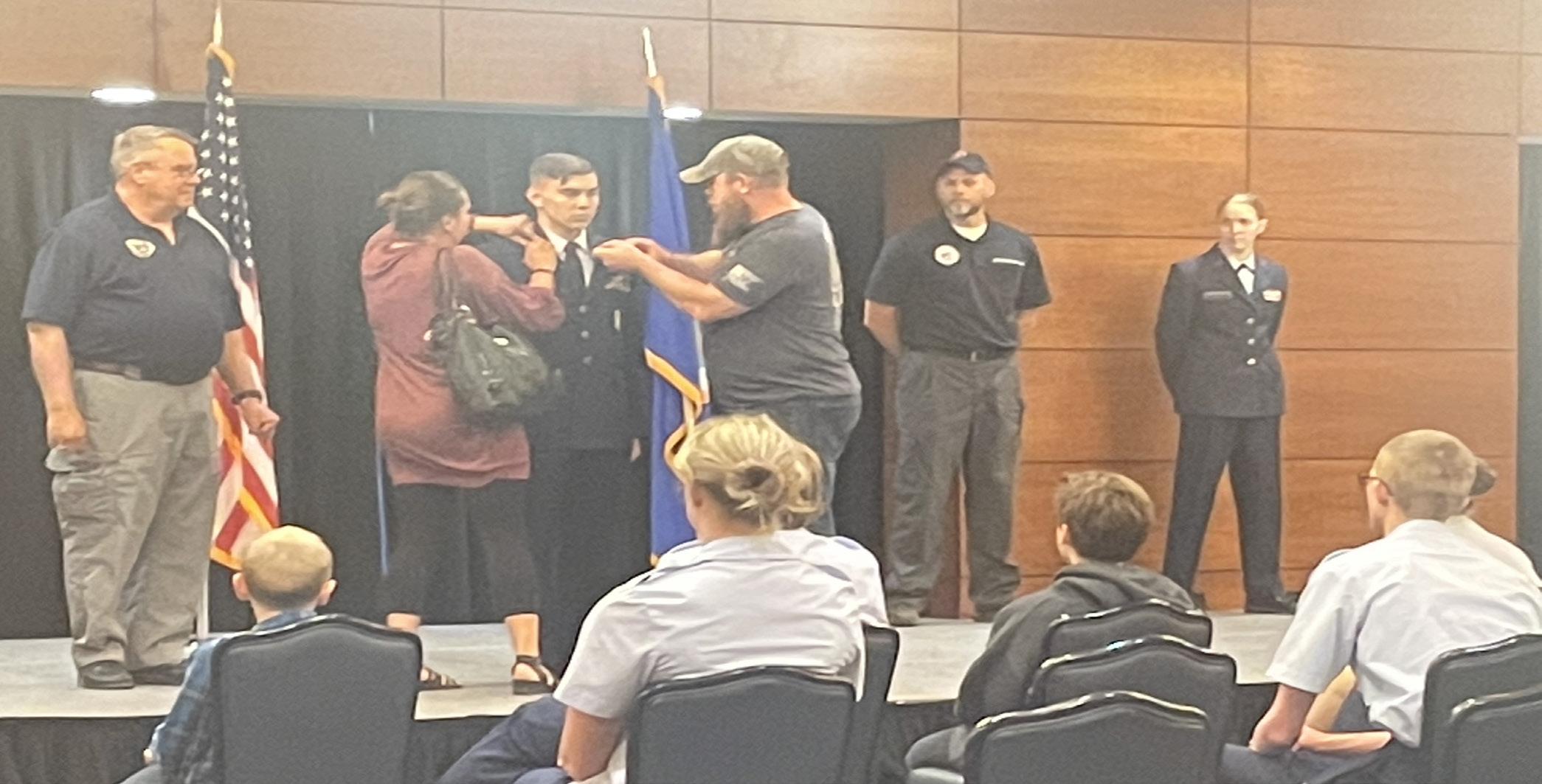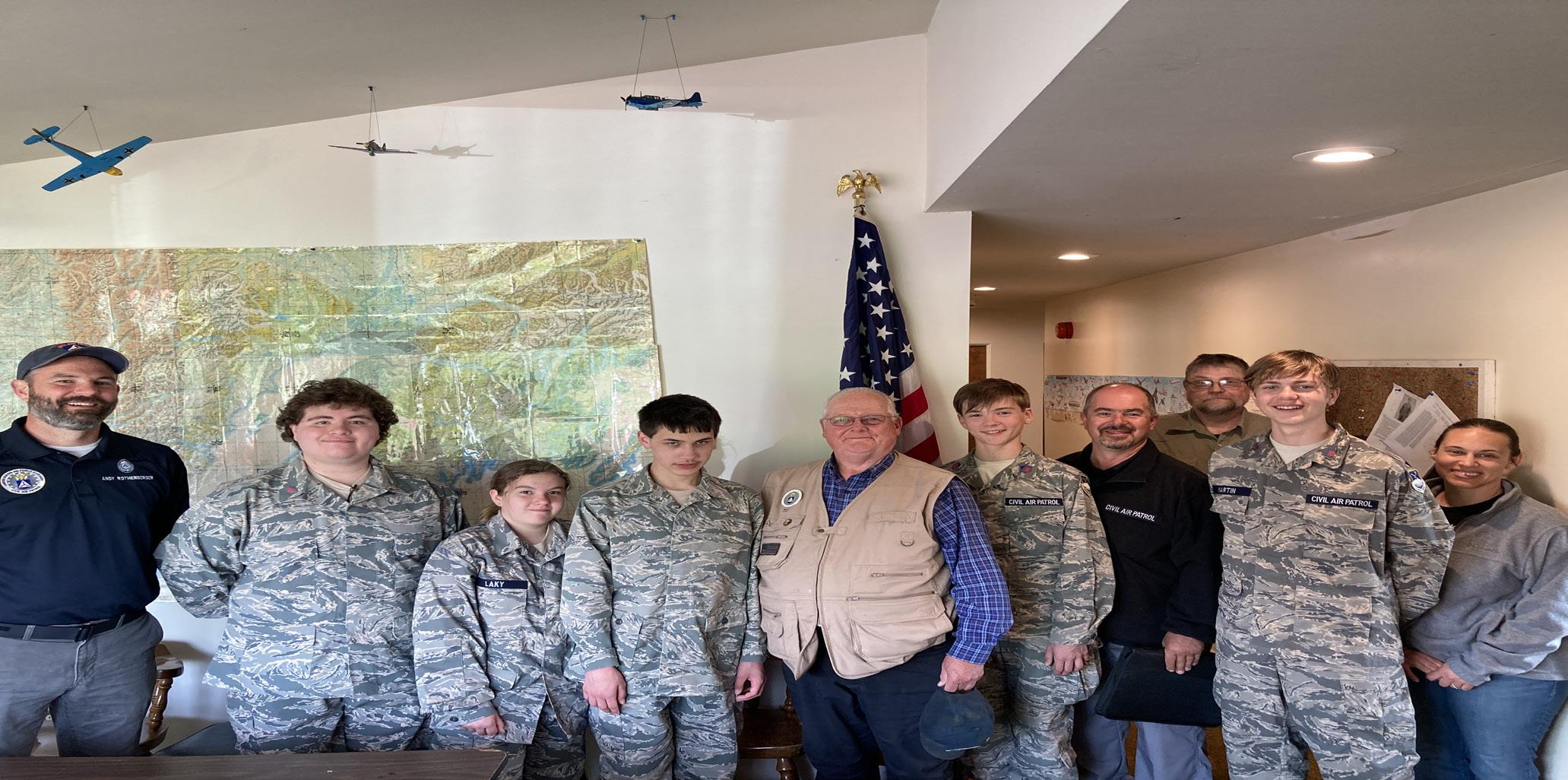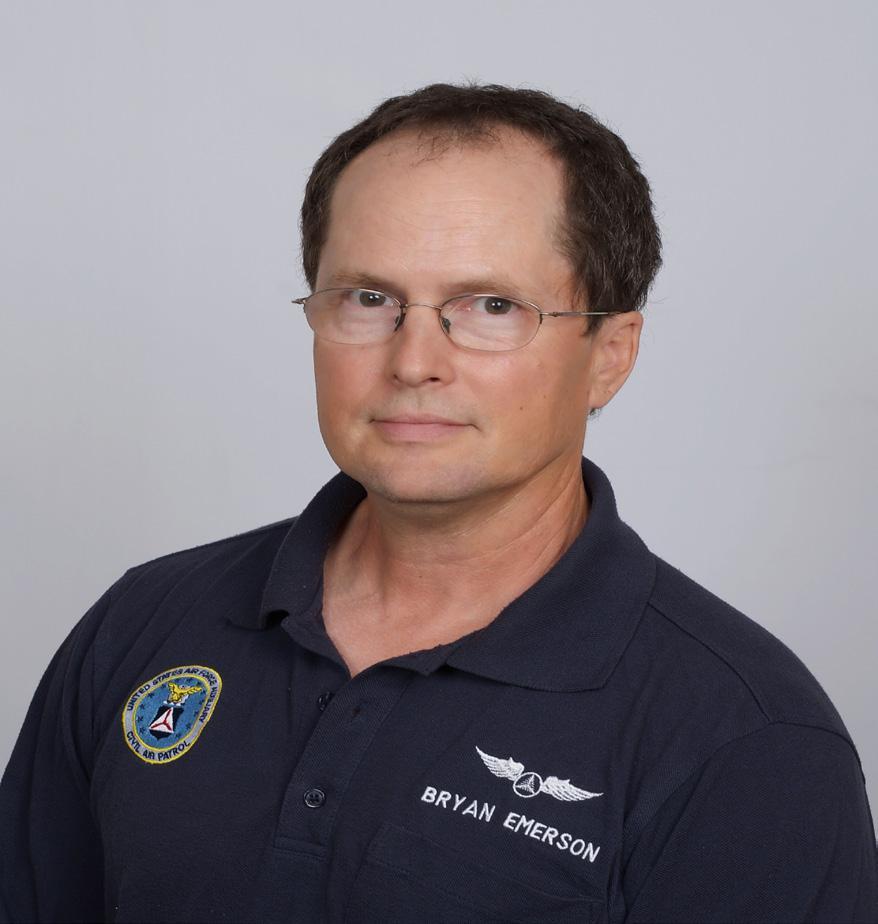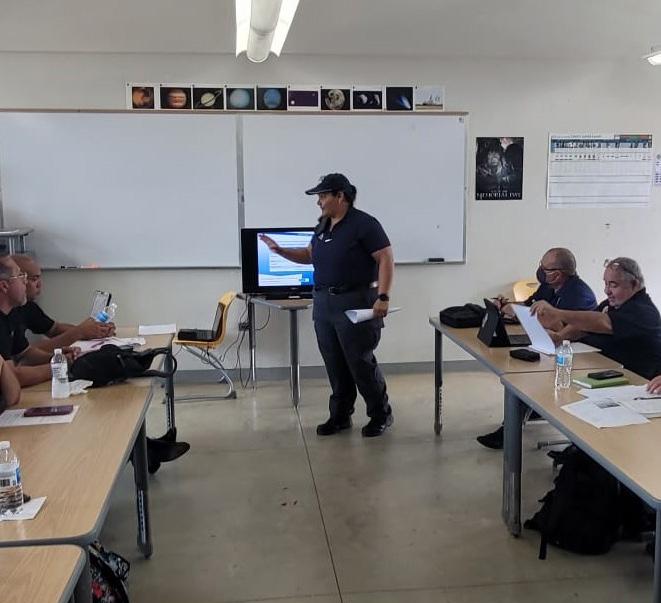Civil Air Patrol




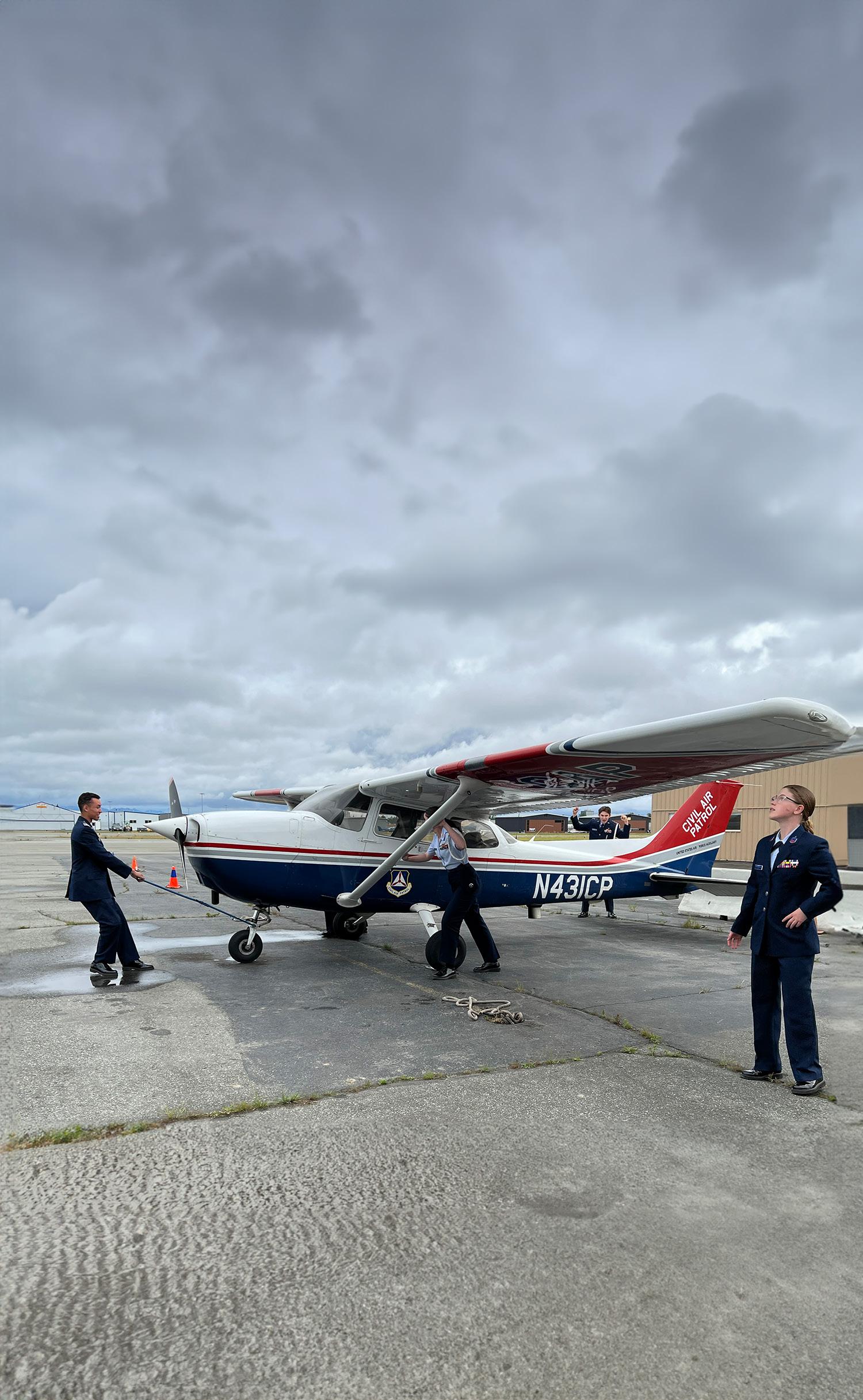
July 2023

Open Mic night, Wed July 19 at 1900


2 CAP AKWG
Col. McClure
Wing Commander
CAP AKWG 3 Index Important announcements Wing Available Positions Wing Staff Abbrevations Cadet Program Aerospace Education Communication Emergency Services Diversity and Inclusion Historian Publics Affairs Tail Section 4 4-5 6 7 8 - 47 48 - 49 50 - 51 52 - 59 60 - 61 62 - 63 64 - 69 70
Important announcements
Save the Date
2023 AKWG Annual Conference, Anchorage, October 6-8
Save the Date
The change of command will take place Aug 3 during the wing staff meeting.
Heads Up For Wings:
Cadet Wings Applications open 1 July 2023
More details in cadets program section
WING VACANCIES
Commander AK-93 Lake Hood
• Leads senior members and cadets in accomplishing the CAP ES, AE and cadet programs.
• Provides leadership and oversight to staff in executing weekly meetings.
• Responsible for compliance with CAP policy, guidance and operating procedures.
• Reports to the AKWG Commander.
Character Development Instructor
• The Character Development Instructors are part of the CAP Chaplain Corps but have different qualifications and responsibilities than chaplains.
• Complete training requirements for character development instructors.
• Present character development lessons for cadets in the absence of a Chaplain.
Assistant Public Affairs Officer - Public Relations, Digital Engagement and Creative Services
• Works with Public Affairs Officer to provide oversight across AKWG units and staff to ensure a CAP-compliant and active social media presence.
• Provides units and staff education.
• Training to develop and sustain relevant social media activities.
• Advises the commander, staff and members as required on CAP social media policy.
4 CAP AKWG
Development Officer
• Directs and coordinates overall planning activities.
• Develop plans for and monitor the overall implementation of special projects/programs as directed by commander/headquarters.
• Plan and coordinate region, wing or group conferences.
• Interpret laws, policy statements, directives, regulations, and other communications received from higher headquarters and integrate their requirements and guidance into plans and programs.
• Assist in the development of operational plans and programs when requested.
Wing Command NCO
• Participate in the decision-making process, as appropriate, on technical, operational and organizational issues.
• Advise the Wing Commander for dress and personal appearance items affecting CAP members and specifically NCOs.
• Serve as a representative of the Wing Commander.
• Serves on award and recognition selection committees.
Wing NCO Advisor
• Participate in the decision-making process, as appropriate, on technical, operational and organizational issues.
• Work closely with their wing’s command NCO.
• Perform other duties as directed by the wing commander.
• Encourage NCO mentorship of cadets and junior officer CAP members.
FOR FULL JOB DESCRIPTION AND DUTIES, REFER TO CAPP 30-1
CAP AKWG 5
JOIN US

6 CAP AKWG
Within the Civil Air Patrol we use several abbreviations.
Let's review them:
CAP AKWG 7 Commander .................................................... CC Vice Commander ........................................... CV Deputy Commander .................................... CD Deputy Commander for Cadets ...............CDC Deputy Commander for Seniors ..... ........CDS Chief Operating Officer (NHQ only) ... ....COO Chief of Staff .....................................................CS Deputy Chief of Staff ....................... ............DCS Command Chief Master Sgt........................CCC Executive Officer ............................................XO First Sergeant ................................................. CCF (Cadet or Composite Squadrons only) Administration ................................................DA Aerospace Education .............................. .....AE Cadet Programs ............................................. CP Chaplain.............................................................HC Communications (Director) .......................DC e-Learning (NHQ only) .................................EL Finance ..............................................................FM Wing Financial Analysts............................... FMA General Counsel (NHQ only) .................... .GC Government Relations Advisor..................GR Government Relations (NHQ only) .........GVR Health Services ...............................................HS Historian .......................................................... HO Human Resources (NHQ only) ................HR Information Technology.............................IT Inspector General ....................................... IG Legal Officer ................................................. JA Logistics ......................................................... LG A/C Maintenance Officer ......................... LGM Supply Officer .............................................. LGS Transportation Officer .............................. LGT National Operations Center..................... NOC Operations .................................................... DO Communications (NHQ only).................. DOK Counterdrug ................................................ DOC Emergency Services ...................................DOS Homeland Security .................................... DOH Operations Training.................................... DOT Standardization & Evaluation ................. DOV Personnel ....................................................... DP Plans and Programs .................................... XP Professional Development ....................... PD Public Affairs .................................................. PA Safety ................................................................SE Wing Administrator (NHQ employee) ..WA
The 71st and 9th Squadrons hosted the first glider weekend at Eielson AFB. Maj Davis and Cap Kelly towed the ASK 21 in the air for 11 flights. Lt Hayes was essential for communicating with airfield operations, driving the van, and making the event possible. O-rides and senior training got accomplished. We are ready for a good summer of glider flying.

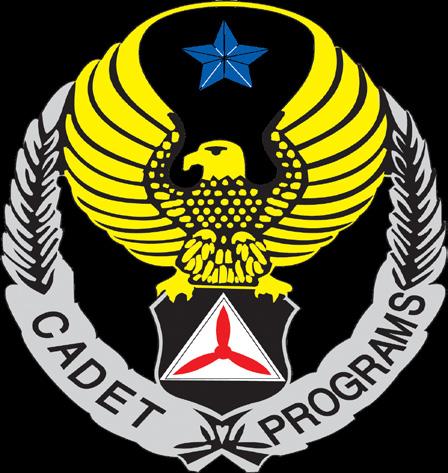
8 CAP AKWG
Many interesting things have happened during this month, let's take a look
Cadet Carter is getting ready for her Orientation Flights
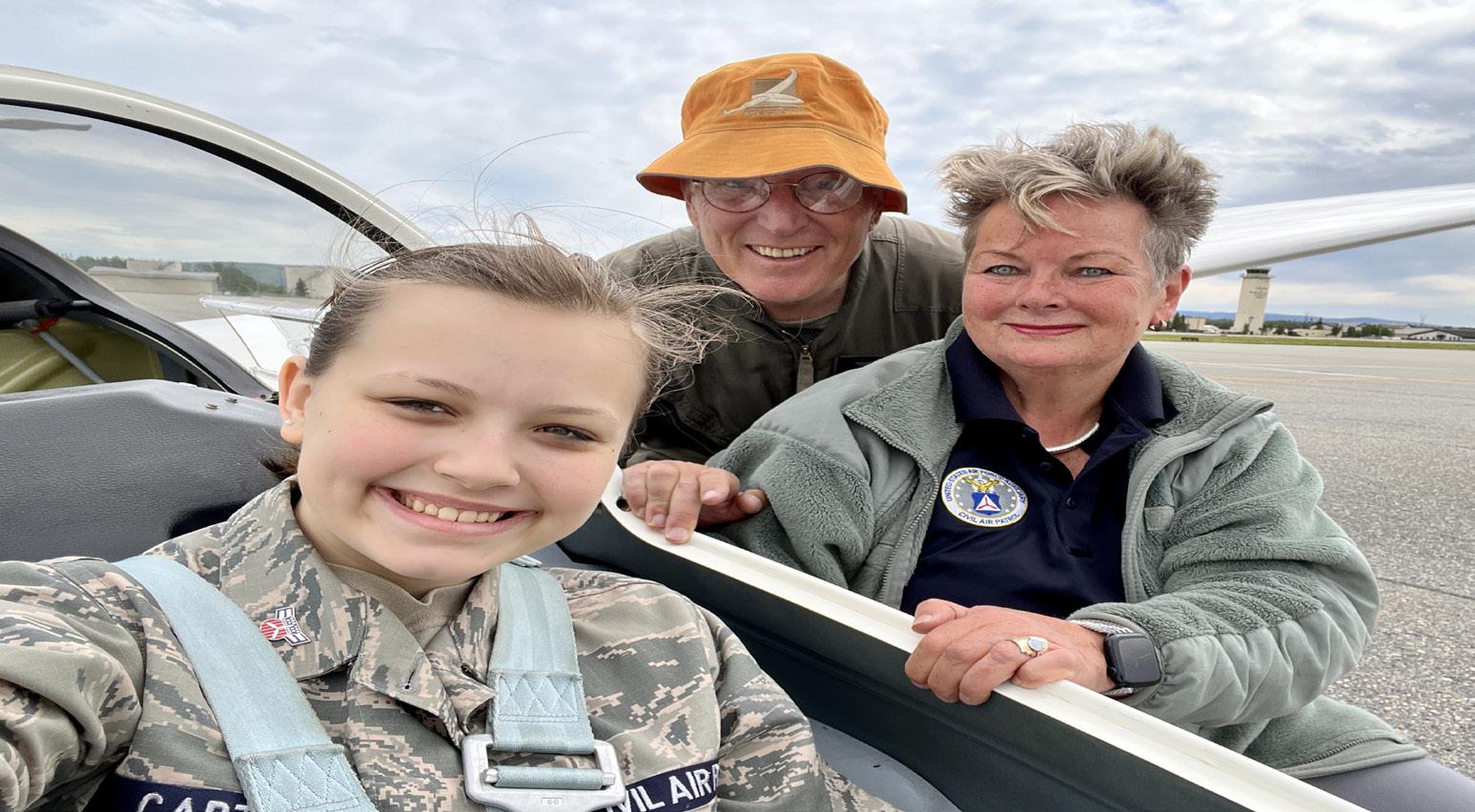
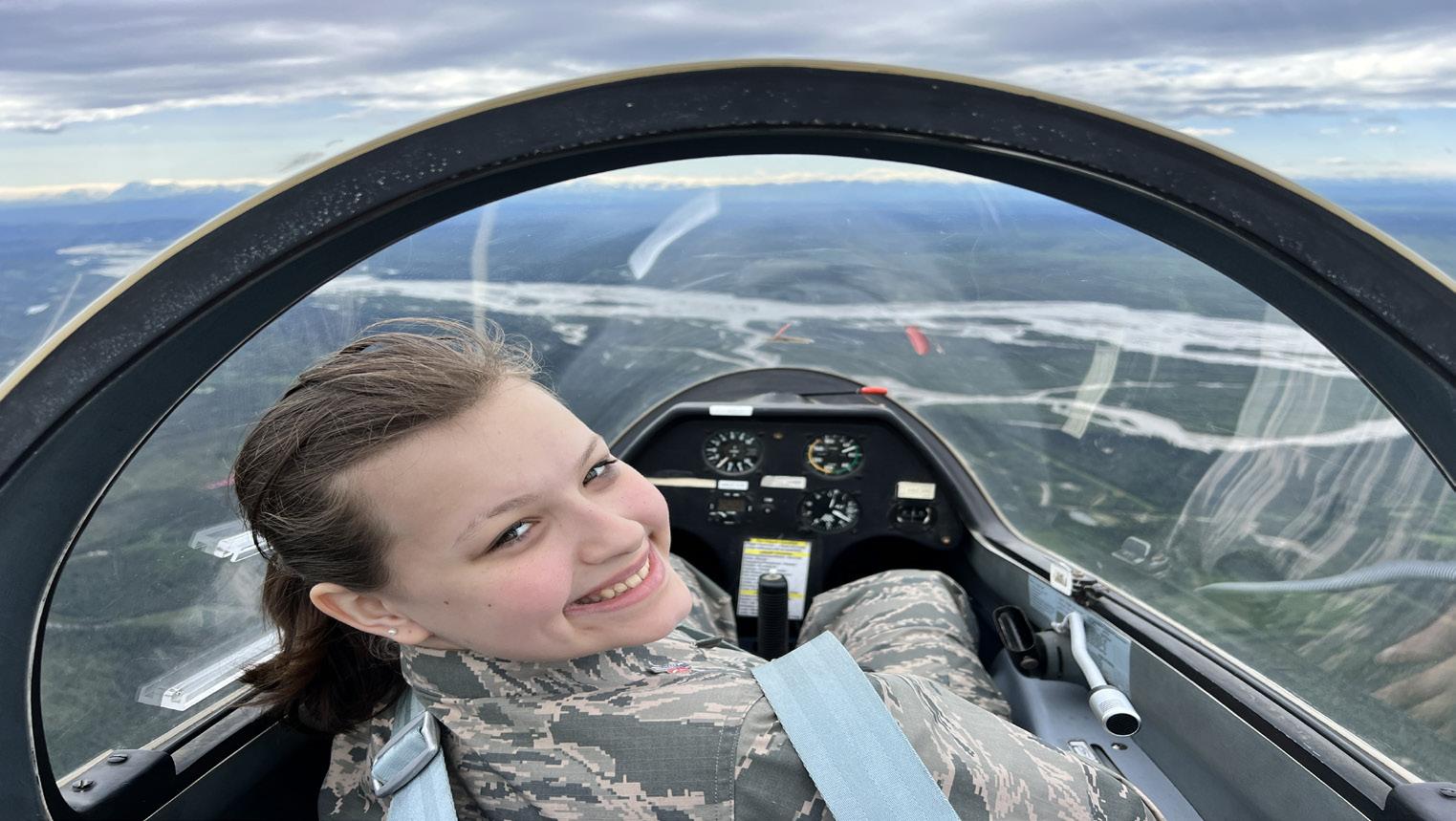
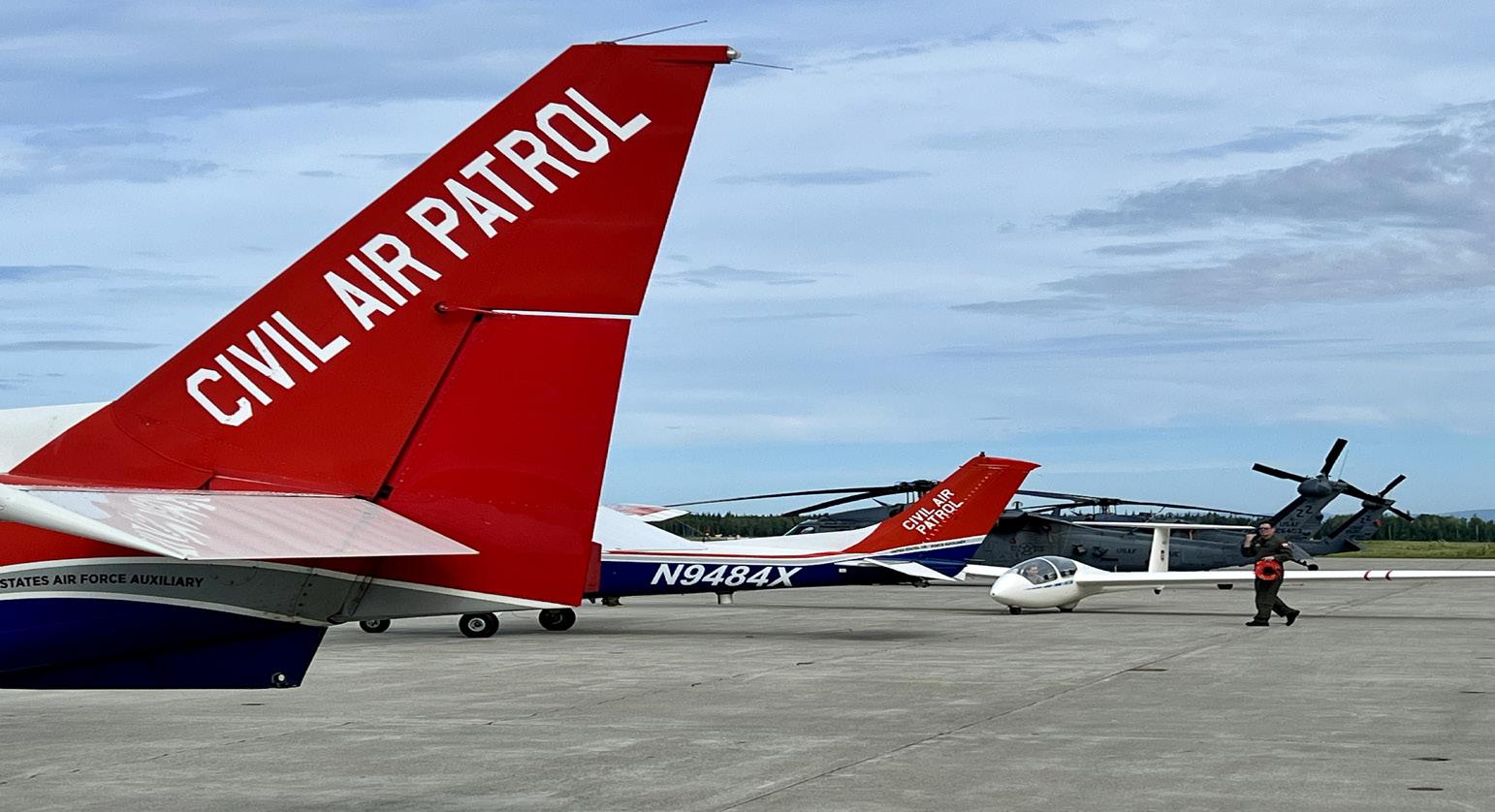
CAP AKWG 9
CAP aircrafts at Eielson AFB- Total Force
CFIG’s Maj. Kaden and Capt. Kelly with Cadet Carter getting ready for flying the ASK21.
Flying is fun! Cadet Carter piloting the ASK 21
On the evening of Saturday, June 24th, 2023, Alaska Wing cadets, along with their families and friends, gathered at Clark Middle School to see four flights consisting of 57 first-time and 21 advanced students perform the Pass in Review. The Pass in Review is the final event of the Alaska Wing Encampment, showcasing how much the cadets improved throughout
Lake Hood
Congratulations to C/2d Lt Ben Walkup, who recently obtained his FAA private pilot license! Cadet Walkup of the Lake Hood Squadron began his flight training with Lt Col Tom Palmer, and also received instruction from Lt Col Brian Porter, TFO Ryan Padgett, and Maj Ben Padgett. He was serving as the Safety Officer at this year’s cadet encampment and had to sneak out for a day to complete his checkride.


How does it feel to have your private pilot’s license? “It feels pretty good that I have something to show for all the work I did, and have the ability to explore and see things most people will never get the chance to. I may officially be a pilot now, but I hope to never stop being a student.
What’s your advice to other cadets that want to get their license? “My advice to instructorcadets getting their PPL
would be to hit the books early, make it easy on your meaning when they give you homework, do it so they’re just checking your work, not teaching it to you when you turn it in, and use more right rudder!”
34 CAP AKWG
C/2d Lt Ben Walkup receives congratulations from FAA DPE Carol Zerbe and Maj Ben Padgett after successfully completing his private pilot checkride
Polaris-Lake Hood
by C/2d Lt Benaiah Vanderlugt
During every one of the Polaris - Lake Hood Joint Squadron meetings, we strive to teach our cadets the ins and outs of the cadet program. We do this with our emergency services, aerospace, physical fitness, and Caracter development programs. Some of this month's activities included learning how to carry a litter and bracing a broken bone, learning about rocket safety, learning about perspective and


how to use it to solve problems as well as many more. It is our mission to prepare the leaders of tomorrow.

CAP AKWG 35
The cadet in this photo is C/CMSgt Brunelle. Cadet Brunelle is overseeing his emergency services team as they practice marching with a Litter.
Cadets in this photo are C/CMSgt Wegemer, C/ Tsgt Johansson. Wegemer is leading her team as they practice litter carries.
The cadet in this photo, is C/1st Lt Halliburton Cadet Halliburton is leading closing formation as the cadet commander of Polaris Lake Hood Joint Squadron.
Arcturus
Arcturus senior member Denise Saigh takes a break with her three-yearold dog, Nanook. Nanook has an unconditional ability to bond with people, and Denise often volunteers to bring him to extended care facilities and other places where his "therapy dog talent" can relieve stress and provide comfort and joy to young and old people alike.

(H) 907.337-8351
(C) 907.350-7951
U.S. Air Force Auxiliary

143093@akwg.cap.gov
akwg.cap.gov
36 CAP AKWG
Lt. Col Jim McCarthy, CAP Commander, CS-17 (Arcturus Sqdn)
Arcturus cadets Emanuel Mosley and Johnathan Maierson flew their first powered orientation flights with LTC Jim McCarthy on June 16.
“ Denise & Nanook”



CAP AKWG 37
Kenai Cadets marching in July 4th Parade
Kenai
CAP Zion Henderson
TOK 4th of JULY PARADE LEAD by CAP CADET COLOR GUARD
by Capt Richard Dennis, PAO


38 CAP AKWG
The 4th of July parade floats assembled at Fast Eddies Restaurant parking lot. The color guard was on hand early, using that extra time to refine their presentation.
Deputy Cadet Commander, David Briar, Lt Col, giving final instructions to the Tok Cadet Color Guard members.
Thanks to all Tok Composite Squadron Cadets who came out and participated in the 4th of July parade. You presented our nation's colors with honor and distinction! Great job!


CAP AKWG 39
Moving out onto the Alaska Highway and leading the 2023, 4th of July Parade are the Tok Composite Squadron’s Cadets. The ALCAN was closed for about 30 minutes, allowing for this years parade, a celebration of freedom.
Adjacent to the start of this years 4th of July Parade is the Tok RV Village which is immediately adjacent to the assembly area at Fast Eddies Restaurant along the Alaska Highway. The Alaska State Troopers closed down the ALCAN for about 30 minutes this past week for this Celebration of Freedom.
Near Tok Alaska is an Alaska theme park know as Muklukland. There, resides Santa’s Rocket Ship. Perhaps a backup should Santa’s regular mode of transportation fail. Or perhaps did it suffer a breakdown and that is why he now uses reindeer?

All 4th of July floats assemble at Fast Eddies Restaurant in Tok, Alaska which faces the Alaska Highway. Who would have guessed that a Grizzly Bear could steer a boat?

40 CAP AKWG
In June, more members completed GES 116 Emergency Services training. The cadets practiced the litter carry and became quite proficient at it.
Cadet Sponsor Heather Medlin taught a lesson in repairing uniforms. Cadets learned to sew buttons and repair an ABU tear.
Cadets played soccer during their monthly PT testing/activities and Drill practice and testing. The unit appreciates Fort Greely allowing us to hold this meeting at their track each month.
C/TSgt J Medlin attended the AKWG Encampment Advanced Training Flight in June. Some cadets plan to attend Eielson squadron’s cadet/ recruitment activity during the Eielson Air Show in July.

Delta Force
C/TSgt C Schmidt will attend the Medical Orientation Training School NCSA in Nacogdoches,TX, in July. She completed First Aid/CPR/AED, GES 117, IS 100 and IS 700, Basic Life Support Provider course (including bag mask device usage, airway ventilation, mechanical/manual suction devices), Emergency Medical Responder assignments and tests, and the Texas EMS Jurisprudence course as pre-requisites for the NCSA. The pre-reqs took approximately 6570 hours to complete, and she will receive a full high school credit in Emergency Services Management for the combination of the coursework plus all the training at the actual NCSA. NCSA graduates will sit for the National EMT’s Emergency Medical Responder Exam. The Emergency Medical Responder course in TX will also include low-angle rope rescue training.
CAP AKWG 41 Capt Kristina Schmidt Commander 027 Delta Force Cadet Squadron - PCRAK-027 AKWG Asst Dir of Cadet Programs Civil Air Patrol, U.S. Air Force Auxiliary (M) 907.803.9610 GoCivilAirPatrol.com
https://www.kodiakdailymirror.com/gallery/image_64307c9c-1ba1-11ee-8dd8-1b4a3714fe3e.html
DEREK CLARKSTON/Kodiak Daily Mirror
Kodiak’s Civil Air Patrol squadron hosted a “Learn to Survive: Lost in the Woods” training course for youth Saturday at Camp Mueller. Kids learned how to build a campfire, what plants and berries are edible on Kodiak Island, first aid and how to get spotted from the Coast Guard.

42 CAP AKWG
Kodiak
Every Monday from 6:30 to 8:30 Kenai Cadets make Aerospace, Leadership, Safety, and Character Development Presentations. The Cadet led presentations were excellent.
Kenai WELCOME
Two new cadets joined our squadron. They are Cadet Hadassah Schwartz and Cadet Kyler Whitmore. They are working hard and are receiving Orientation flights.
CONG TULATIONS
Cadets worked very hard and passed many achievements. Achievement 2: Hugh Traugott, Bjorn David, and Fletcher Darr. Achievement 3: O’Ryan Jackson. Achievement 5: Laif Rothenberger. Achievement 6 : Jacob Ries.
We are very proud of their efforts and hard work.
Cadets volunteered at the Kenai Senior Area on July 4th. They hung signs, moved picnic tables, cleared a large grassy area, and carried boxes of materials for the all-day picnic. The Kenai Seniors were very appreciative of our hardworking cadets. They were: C/SrA Zion Henderson, C/A1C Victor Henderson, C/CMSgt Lydia Schwartz, C/2dLt Luke Hillyer, C/2dLt Lane Hillyer, C/1stLt Wyatt Cole, C/CMSgt Luke Cole, C/A1C Noah Cole, and C/A1C Caleb McCoy. They worked hard and treated everyone with kindness and respect.
Kenai cadets marched in the July 4th Parade. They did a fine job of marching and the crowd was impressed. It was an excellent day of fun and hard work for our community.
All cadets are working hard, setting a good example in our community, and supporting each other in practicing the Core Values.
CAP AKWG 43
Heads Up For Wings: Cadet Wings Applications open 1 July 2023 by
Capt Karen Padgett, AKWG Director of Cadet Programs
Cadets, the Cadet Wings application window opens soon, on Saturday 7/1/23!
Especially if you have soloed, glider or powered, you are well-qualified for this scholarship.
Cadet Wings is a merit-based scholarship that, if awarded, may fund up to 60 hr of flight training at your local FBO, designed to culminate in a private pilot's license-up to a $15,000 value (Reference: https://www.gocivilairpatrol.com/ programs/cadets/cadetinvest/ cadet-wings and CAPP 60-43).

Did you know Alaska Wing CAP has a YouTube channel? A YouTube video of an Alaska-specific webinar discussing Cadet Wings is available here: https:// youtu.be/U6Nuvu0r0_Q
This year, the application window opens Saturday, 1 July 2023. This is much earlier than previous years.
To be considered for the scholarship, cadets will want to apply *on* 1 July 2023. We encourage you to ramp up your efforts to complete the tasks below. Cadets may be selected on a rolling basis, so delaying past 7/1/23 significantly reduces your chances.
The window is open until 9/30/23, but by that date, all the money may be allocated to cadets who act early.
44 CAP AKWG
Apply anyway, and continue advancing through the tasks for December AKWG flight academy applications and next years' Cadet Wings window.
We recommend compiling the below information in a 3-ring binder (Binder coversheets available here: https://akwg. cap.gov/programs/cp/flighttraining )
1. Gather the following information:
Your Pilot's Logbook (all serious flight students own one. They are readily available online).
Computer (the websites referenced below do not work well on a phone)
Your Social Security Number
Birth certificate, passport or other government-issued identification proving your US citizenship if you are a US citizen--TSA & your flight instructors will need to see this periodically 3-ring binder: (Binder section cover pages available on this website (https://akwg. cap.gov/programs/cp/flighttraining)
Notepaper/pen
Contact information for any instructor pilots you know/have worked with
The following items do *not* need to be completed in order. Do as many as you can and get as far on them as you can by 7/1/23, then continue making progress.
1. Obtain Student Pilot Certificate aka your IACRA number (https://iacra.faa. gov/IACRA/HelpAndInfo.aspx?id=6). Note: Flight training is *not* required to register as a Student Pilot!!
Your squadron leadership can connect you with a CFI who can help you with the 2nd step in this process (the RI or Recommending Instructor), likely just with an in-person or virtual conversation, your ID, & your Student Pilot Certificate number)
2. Register with MedXPress & Schedule your Class 3 or higher Flight Medical (https://medxpress.faa.gov/ medxpress/)
3. Start Sporty's Ground School
If you did not join Young Eagles when you received the email invitation after your 1st orientation flight, join now by doing the following:
To see the date of your first o-flight, see your CAP member search report. To do that, log into eservices (capnhq. gov). From the menu, choose "Administration" and "Member Search." Type in your CAPID, and click the "Member Search Report" blue link under your photo.
CAP AKWG 45
Print your Member Search Report to pdf & save it on your hard drive. Scroll down to find the "Orientation Flights" section and list the first date you took an o-flight.
Back on the EAA website, click on the link for your FREE resources, particularly the Sporty's Free Private Pilot course
Log into your Sporty's student account and ensure it is activated by watching the first video under "Flight Training".
PRO TIP 1: Watching all 26 "Your First Hours" videos before your next o-flight or instruction,demonstrates your commitment to becoming a pilot and helps you get the most value from your time in the plane with a pilot. Your pilot will appreciate your dedication and be able to show you more !!
PRO TIP 2: 90% or better scores on two practice tests encourage your favorite CFI to endorse you to take the written test)
PRO TIP 3: Many CAP cadets also get flight scholarships through EAA, so review the www.eaa.org website thoroughly!
4. Review the CadetWings Guide (CAPP 6043: https://www.gocivilairpatrol.com/ media/cms/P_6043_7B02E937DF565. pdf).
Start gathering in your binder the items listed in Section 3.2.1 (Prospective Candidate Task List) and Attachment 3 (Required Documents for selectees) of the Cadet Wings Guide. Also note the other activities you get "points" for in the selection process in Attachment 2.
5. Refresh your Aircraft Ground Handling training in AXIS if it expires within the next year.
6. Solo! Keep working toward your solo in a glider or powered aircraft if you have not already soloed. Advancing in your ground school, chair flying, and letting your squadron leadership know of your interest are the best ways to progress. Not sure what chair flying is, check out this video! https:// youtu.be/dL6murKql1k
Good luck with these steps. If you need help, take this newsletter article to your squadron Senior Member leadership. They can help you, and may even be glad to serve as your "Ray Navigator" (mentor to help you through the process. They do *not* need to be a flight instructor!)
46 CAP AKWG
Capt. Karen L Padgett
Alaska Wing Director of Cadet Programs
Squadron Commander, Lake Hood Cadet Squadron, Anchorage, AK
Civil Air Patrol, U.S. Air Force Auxiliary
Pick.Click.Give to Alaska CAP Cadet Programs
(M) 907.350.8533
karen.padgett@akwg.cap.gov
GoCivilAirPatrol.com
Volunteers serving America's communities, saving lives, and shaping futures.

CAP AKWG 47


48 CAP AKWG Rocketry Program Outcomes and Stage one requirements
https://www.gocivilairpatrol.com/media/cms/Complete_Guide_F4ED514D80382.pdf
https://www.gocivilairpatrol.com/media/cms/Complete_Guide_F4ED514D80382.pdf

CAP AKWG 49
Air Band Radios
by Lt. Col. Kristin Freeman
The following article was inspired by a correspondence between Lt Col Bryan Emerson and Maj John Nealon concerning the ICOM radio at Birchwood.
Air band radios are VHF AM radios. The Federal Aviation Administration has authority to regulate and license use of VHF AM spectrum between 108 MHz and 137 MHz, which is referred to as the “air band”. It’s subdivided into three main parts, with the lowest section being for instrument navigation. Communication between aircraft gets a section, and aviation support (ATC and weather broadcasts) get another section. Several radio manufacturers sell receivers and transceivers for air band use.

Many CAP units own air band radios. As CAP property, they should be on the inventory. Unfortunately, CAP’s National Technology Center (NTC) will not issue an air band radio to a unit, and air band radios purchased with CAP funds are not supported by the NTC. “Not supported” means that accessories (such as coax and antennas) are not provided for these radios, and neither are repairs. It’s up to the unit to pay for accessories, repairs, and maintenance.
CAP’s use of air band radios is largely limited to air-to-air use.
Our aircraft may use them to talk to each other and to other aircraft when they are airborne, or with air traffic control, or for getting weather information at airports. These are legal and legitimate uses of air band radios.
Some CAP units use air band radios to communicate between the CAP aircraft and the ground base. However, because CAP does not have a license for ground-to-air use of air band, this is not appropriate. Usually, we attempt to justify this kind of use by saying “it works better”, but that is like saying that because your neighbor’s shower works better than yours, you can walk into his house and use his shower when you need it. It’s not a defense that will hold up in court. CAP provides its units with VHF FM radios, and installs VHF FM radios in all of its aircraft. We’re expected to use those radios for all CAP-to-CAP communication, whether in the air, on the ground, or between the ground and the air. In circumstances where it doesn’t work well, we have Communications Unit Leaders (CUL’s) and wing communications staff whose job it is to come up with solutions. (That’s why every mission and exercise should have a designated CUL.) The solution often will be relays, which isn’t as smooth or convenient as using VHF AM, but it is legal.
50 CAP AKWG
There can be cases where CAP use of air band radios is needed, but these cases will always involve an outside agency which has a license for ground-to-air use of air band radios. If a served agency has a license for ground-to-air use of air band radio, then CAP units can use air band radios to communicate with that served agency. (CAP-to-CAP communication is not covered by the served agency’s license.) If your unit is using an air band radio in support of a served agency regularly, there should be an Memorandum of Understanding (MOU) in place. Your wing comm staff will work with NHQ to help you get an approved MOU. Another legitimate and legal use of an air band radio is to listen. No license is needed to listen on any radio band!
Listening on air band can help ground base staff maintain situational awareness, and respond to a small problem quickly enough to prevent it from growing into a big problem. In an emergency in which human life or limb is threatened, any usable radio frequency may be used. That includes air band. However, we can’t use that justification to use air band on mission after mission, because search and rescue is what we do, and the need is foreseeable.

While enforcement of frequency regulations is spotty and inconsistent, it’s serious when it happens. The fines are large. CAP will not pay the fine for you if you have violated a regulation or law.
If you have any questions or concerns about the use of air band radios, please feel free to contact me at 480550@akwg.cap.gov.
CAP AKWG 51
USAF & CAP MISSION NORTH TO THE YUKON RIVER
The 085th Tok Composite Squadron in Action

The Red Flag Mission of 12-13 June 2023.
The 085th was privileged to assist the USAF on training missions at Eagle Alaska. Eagle is on the Yukon River just down the Yukon from Canada’s Yukon Territory. Working with Maj. Jim Low of the 09th as Incident Commander, Capt. Harry White of the 085th flew N19MJ from Tok to Allen Army Air Base (located near Delta Alaska), picking up two USAF personnel along with their specialty equipment. Then from Allen, the USAF personnel were transported to Eagle Alaska, where training exercises ensued.
Each day, after the USAF personnel had completed preparations, a C130 landed with a crew who performed their training exercises. The USAF personnel were then returned to Allen Army Air Base. The crew on Tuesday was adamant about getting back in time for Taco Tuesday.
Although the flight over the 40-Mile country was a bit bumpy, the passengers on both days noted the beauty of the Alaskan Interior.
Our CAP members found it a pleasure to work with such professionals and to support the Military.
52 CAP AKWG
Reverse Thrust
The C-130 landing in Eagle Alaska. Eagle is on the Yukon River. Gold Stampeeders heading to the Klondike Gold Rush in the late 1800s, would make there way to Eagle and catch a stern-wheeler on up the Yukon River to Dawson City. This is a gravel and dirt runway. The C-130 reverse thrust-er used here, created quite a dust storm. (photo by Harry White).


CAP AKWG 53

54 CAP AKWG

CAP AKWG 55
Critical Communications in Search and Rescue Missions
By Lt .Col. Kristin Freeman
Timely, accurate, and functional communications are essential to the success of search and rescue missions. I have witnessed this time and again during many operations in which I have served on the ground team. So much can go wrong, and so quickly. To ensure safety and success, it’s vital to make sure that the pilots, ground team, and, if possible, the lost person, remain in communication, with updates on their approximate position and condition.
One mission started with an ATV accident in a remote location, about 8:30 pm. A deputy was dispatched to the crash location. Within 30 minutes, he reported that the crash had started a fire, which was growing rapidly in the dry, windy conditions. The county Search and Rescue (SAR) unit was called out to help locate and evacuate campers, hunters, and hikers in the vicinity.
I was assigned as the radio operator and scribe at a forward base to interface with all relevant SAR teams, sheriff, deputy and wildland firefighter observers. My communications center was a vehiclemounted radio in the county deputy’s SUV, parked on an ATV road. I didn’t have a laptop with maps pre-loaded, and there wasn’t much room for a paper map. I kept my log on the ICS Form 214’s that I brought along.
It was evident immediately that the combination of wind and the nocturnal cold air drainage in the mountainous terrain made prediction of the fire’s growth
and direction extremely difficult.
Air assets would not be used until daylight, so I had to depend on radio reports from the teams of firefighter observers, deputies, and SAR team members. All of them reported bad news: the fire was spreading into unanticipated regions.
Soon, it was necessary to warn some of the SAR leaders that their routes in were cut off by the fire, and to share safe exit routes. Any communications failure could have resulted in death of my SAR teammates before the sun rose.
The sheriff on the scene decided to call out most of the SAR assets, except for two twoperson ATV teams who were moving in to support a deputy who was moving down slope to the fire to investigate reports from SAR teams of someone screaming.
Because the deputy was in such a risky situation, the sheriff instructed me to focus on him and two ATV teams, and not to allow more than 10 minutes to go by without hearing from the deputy. ‘Stay in contact, because I don’t want to lose my guy to this fire.”
Shortly after that, Dispatch reported on the radio that a hiker had been cut off by the fire.
He had made his way to a mountain peak where he could text but not call 911. He gave GPS coordinates. Could we advise Dispatch on a safe route out for the hiker?
56 CAP AKWG
Consulting with the firefighter observers and county support people, it became evident that the hiker had no safe route out. The fire had cut him off, and was burning up the mountain toward him. The only way to save him was a helicopter.
At this point, I was having trouble understanding the deputy, because every time he hit the PTT, he had to shout to be heard over the roar of the fire. After two or three such exchanges, the sheriff told me, “Call him outta there. If he gives you any s__t, tell him I ordered it. He’s to go straight up the slope to the ATV teams. Stay in contact with all of them until they’re out safe.”
While I maintained contact with the deputy, the sheriff also had me instruct Dispatch to call a rescue helicopter. Dispatch reported
three refusals due to the high risk of operating at night near a fire in the mountains. But the fourth call was a conditional yes, if the hiker could leave the peak for a better landing spot.

The sheriff and SAR team leaders recommended a flatter saddle between two peaks, about a mile from the hiker. I sent the coordinates to Dispatch which texted the hiker.
While we focused on the hiker, the ATV teams reported that the deputy had reached them, and they were headed back to the forward base. Meanwhile, Dispatch reported that the hiker would attempt to make it to the saddle, but that once the hiker left the summit, we’d lose communications with him. This was a necessary risk, because if he stayed on the summit, we’d lose him to the fire.
CAP AKWG 57
The wildland firefighting command came on to our channel to inform us that the incident had been upgraded to a Type 3 incident, and that their Incident Management Team ( IMT) was inbound.

Our two ATV teams pulled up to the forward base with the deputy. He dismounted and limped over to the sheriff to report. His uniform was sweat stained and torn. His face was smudged with soot, and one eye was swollen shut. He had covered about 20 miles on foot in difficult terrain in the last eight or nine hours. If we had lost communications with him at almost any point in that time, it was unlikely that he would have made it.
Shortly after, Dispatch notified us that the helicopter had launched and was inbound for the designated Landing Zone. Their plan was to land at the saddle, pick up the hiker, and transport him to a small dirt airstrip near a lake nearby. If they were unable to land, or if the hiker didn’t show up on time, the crew would return to base. The sheriff sent another deputy to the airstrip, with instructions to pick up the hiker if the helicopter dropped him off, and to report by radio if the helicopter didn’t land by sunrise.
After many hours of hot, grimy, sooty, exhausting work, the sheriff looked over the tired group of SAR members and deputies standing in the pool of light from the vehicle lights. “Good effort, people,” he said. “At this point, you’ve done what you can do. It’s almost 5 am. Go home and get some rest.
You SAR people, if you can be back at the substation by noon, I can use your help evacuating the towns and the campgrounds. Just call in service when you leave your home, and I’ll have assignments waiting for you.”
This mission, among many, was heavily dependent on functional radios and experienced communicators. Without this timely interaction among dispersed teams, remote from the convenience of cell phone towers, who knows what the outcome might have been.
If you are interested in learning or practicing radio communications for Search and Rescue missions in CAP, feel free to contact me at 480550@akwg.cap.gov. You are welcome to participate in any of our daily Communications nets, seasonal encampments or annual practice emergency scenarios. Alaska is getting new communication equipment from National CAP headquarters and I will distribute them to interested CAP members soon. Let us be prepared for the next Alaska SAR emergency.
58 CAP AKWG
Ryan Padgett - completed his Mission Pilot check out Jul 8! Ben Walkup - working on his Mission scanner qualification The deal was to wash the plane in trade for CAP training flights!


CAP AKWG 59




















